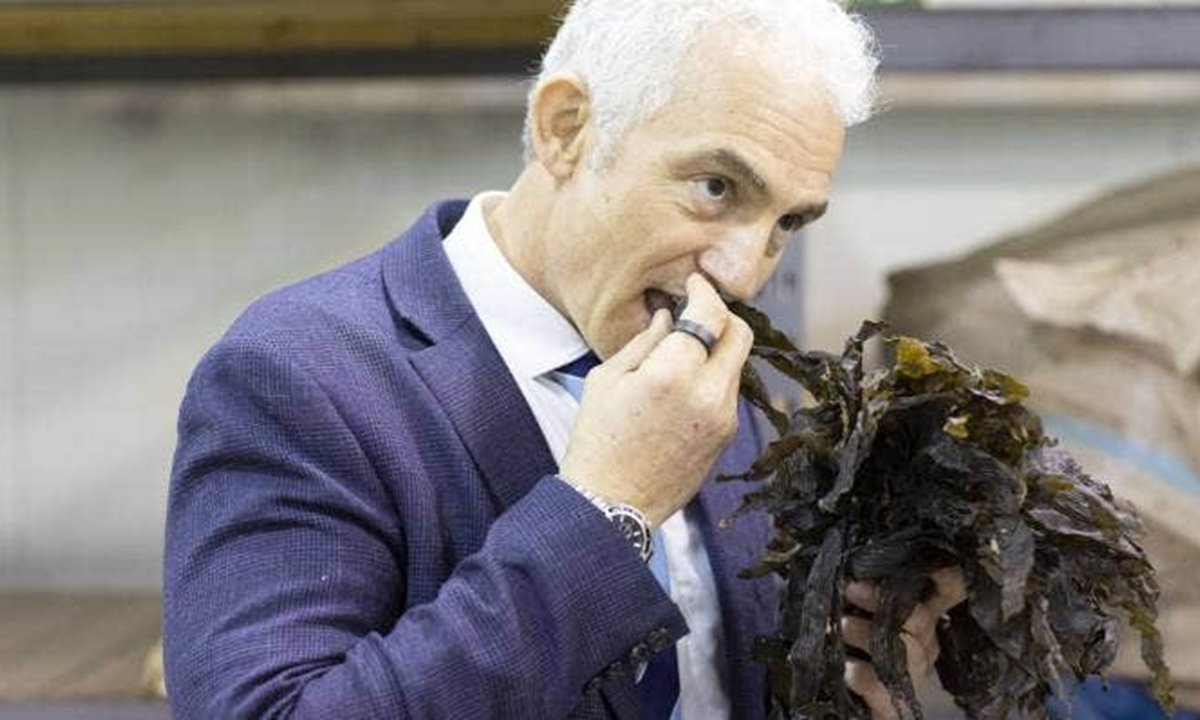A project turning seaweed into a gel that can be used in cosmetics, wound care and even plastics has won Government backing.
Creating the world’s first commercial seaweed-based nanocellulose manufacturing plant is a $1.5m project, and the Government is loaning $750,000 towards it – with potential for further investments.
Economic and Regional Development Minister Stuart Nash made the announcement in Paeroa, Waikato, on Wednesday.
“This project is on the cutting edge of global innovations... and could become a major player in aquaculture’s billion-dollar industry,” Nash said.
Leading the project is AgriSea, in partnership with Crown Research Institute Scion
AgriSea is a Māori-owned company which has been operating out of Paeroa for 26 years and is leading the seaweed and agricultural industry in New Zealand.
The loan will allow the company to expand its work, by producing commercial volumes of nanocellulose hydrogel – a gel-like substance that can be used in bio-composites, cosmetics, wound care and tissue engineering and even plastics.
The seaweed nanocellulose differs from tree-based sources and will supply a growing market both in New Zealand and offshore.

Christel Yardley / Stuff
The gel-like substance made from seaweed can be used in bio-composites, cosmetics, wound care, tissue engineering and even plastics.
To get this product the seaweed is broken down to a nano-size, AgriSea chief executive Clare Bradley said.
At the moment, the seaweed is hand collected after wash-ups across the country – with 30% left behind for native species – but this funding will allow the company to expand its production by growing on land and in the sea, Bradley said.
“The interest in seaweed is growing exponentially around the world as people look to it as economic wealth but also an opportunity for our environment with significant investment and funding opportunities worldwide,” Bradley said.
“Here in Aotearoa it’s very small. There’s only a handful of us, but it’s growing.

“The interest in seaweed is growing exponentially around the world,” says AgriSea boss Clare Bradley, left. She’s pictured with project leader and biomaterials scientist Marie Joo Le Guen.
“This funding buys into our vision of a high-value seaweed sector that creates thriving coastal communities across Aotearoa.”
The loan is offered through the Government’s Regional Strategic Partnership Fund. Nine jobs will be created once the plant is established.
The Government has invested $4 billion into regional New Zealand’s economy, with $275 million going to Waikato in the last three years.
It also has a goal to "streamline" the aquaculture industry towards becoming a $3 billion industry by 2035 – with Coromandel playing a major role.

Christel Yardley / Stuff
The seaweed is fermented for three months before it’s turned into products.
Nash said he imagined AgriSea’s loan will only be the start of the Government’s investments in the seaweed industry – joking that he would have “loved to take an equity share”.
“We know what we are doing on the land – and we do that very well – but the sea and seaweed has huge potential.
“This is living the circular economy. This is taking something that was waste and turning it into added value.
“And that’s how we’ve got to do things from here.”



.jpg?sfvrsn=14164ce5_1&mode=crop&width=770&height=462&format=jpeg&quality=85)
.jpg?sfvrsn=414c0434_1&mode=crop&width=770&height=462&format=jpeg&quality=85)
.png?sfvrsn=16db4cf2_1&mode=crop&width=770&height=462&format=jpeg&quality=85)